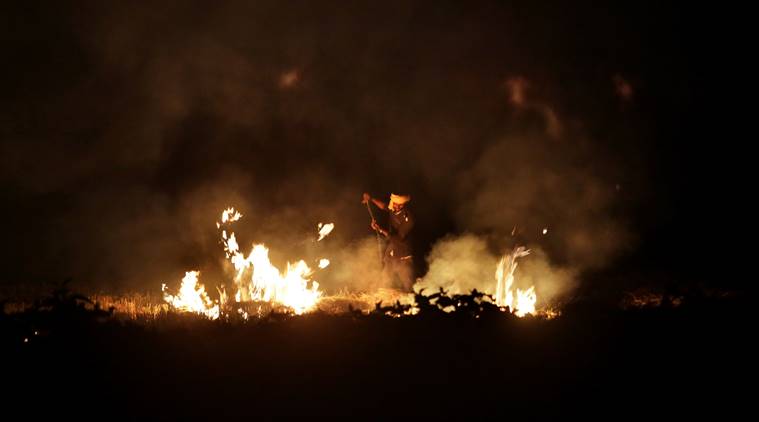
Delhi’s air, especially in the winters, has a larger concentration of black carbon (BC) from incomplete combustion as compared to megacities across the world, a study on biomass burning and its effects on Delhi says.
It also says that BC entering Delhi from neighbouring states is around 42% in winter and 36% in autumn. Burning of crop residue or wood and vehicular emissions, both contribute around 40% each to pollution in Delhi, the study says, adding that in Chinese megacities, the pollution load from fossil fuel combustion is much higher, at around 70% to 80%.
Pointing to the phenomenon of crop residue burning in states such as Punjab, Haryana and Uttar Pradesh, which other research works have said contributes to Delhi’s winter pollution, the study says that while summer months see pollution majorly owing to local sources, winter and autumn particulate matter (PM) has a large footprint of biomass burning.
The wind direction in winter (northwesterly), as opposed to southwesterly in summer and monsoon, helps bring the biomass burning load to Delhi. The weather conditions ensure that the atmospheric boundary layer height in winters is lower, which means that atmospheric transport occurs closer to the surface in winter and autumn, the study says.
Black carbon is a pronounced problem not only in Delhi but in other cities that fall in the Indo-Gangetic Plains (IGP).
The study, carried out by scientists at the Stockholm University, Sweden and Indian Institute of Tropical Meteorology (regional centre, New Delhi), says that the BC load in PM 2.5 (particulate matter finer than 2.5 micrometres) is almost twice the load in Beijing aerosols.
The research, which used data collected in 2011, was published in journal Nature Sustainability.
Black carbon not only affects health adversely but also contributes significantly to global warming. The study also looks at the seasonal trend of variation of organic carbon and BC in particulate matter.
“Heavy rains occur in Delhi during the summer months with maximum rainfall (~150 mm) recorded in September during 2011. Coincidentally, the yearly minima in PM 2.5, BC and OC concentrations are observed during summer,” the study says.